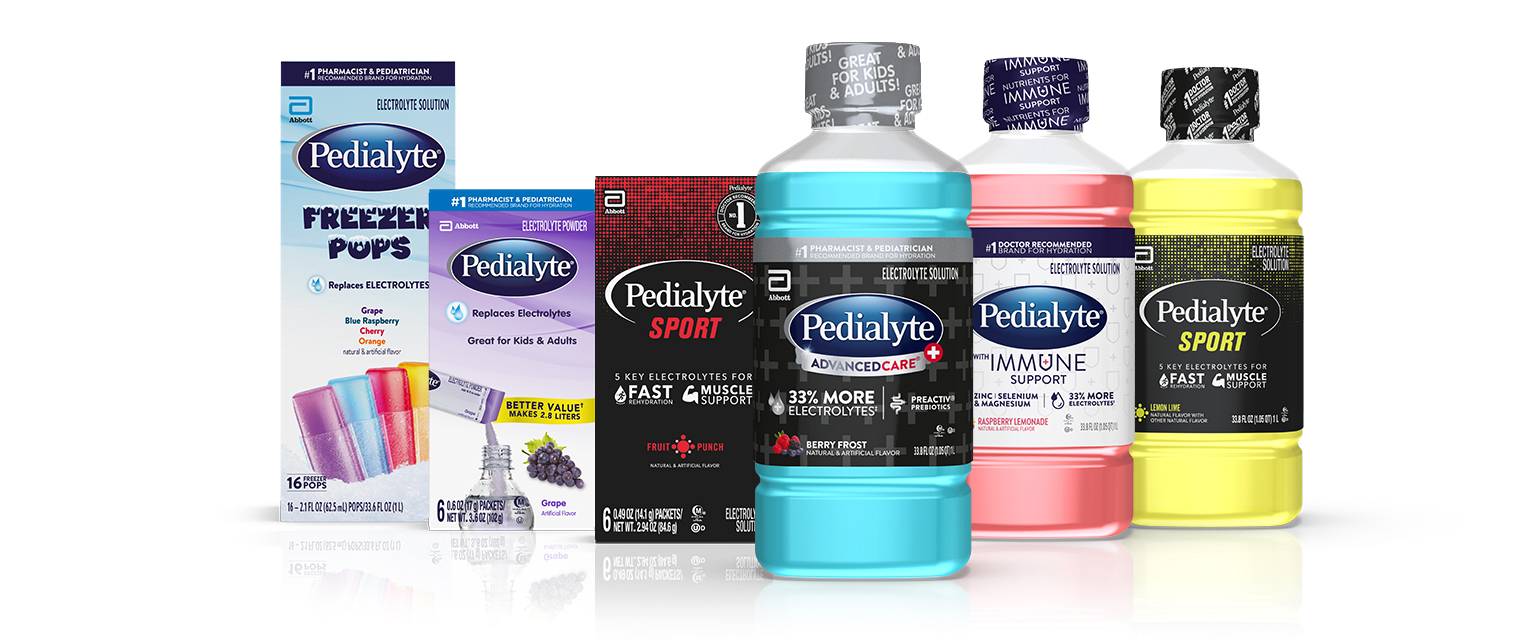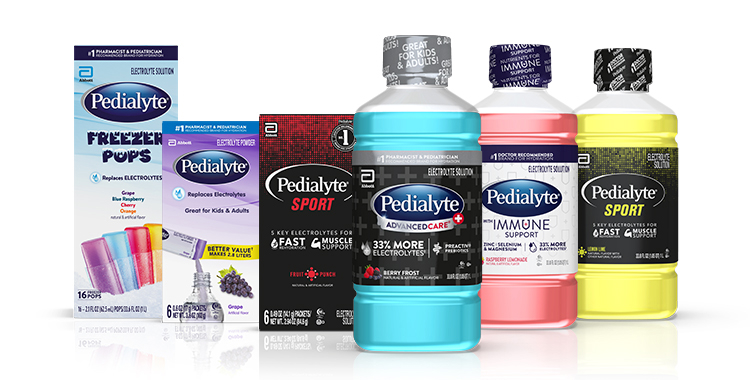Pedialyte's specific blend of minerals and nutrients contains appropriate and balanced amounts of sugars and electrolytes in a particular quantity of fluid. This formulation is important for maintaining fluid and electrolyte balance in children who have abnormal losses, such as can happen with diarrhea. If other fluids are added, the quantities and ratios of electrolytes and sugars may be altered, making the product less effective.
Additionally, adding other sweetened fluids could draw water back into the intestine and make diarrhea even worse. Therefore, no other fluids should be mixed with Pedialyte unless recommended by a health care professional. And it's important to note that when mixing Pedialyte Powder Packs, only 8 fl oz of water should be used per serving.
If the taste of Unflavored Pedialyte is a concern, Pedialyte is available in a variety of flavors*: Mixed Fruit, Strawberry, Grape, and Bubble Gum. Also, Pedialyte Freezer Pops come in Grape, Blue Raspberry, Cherry, and Orange.
*Natural and artificial flavors




